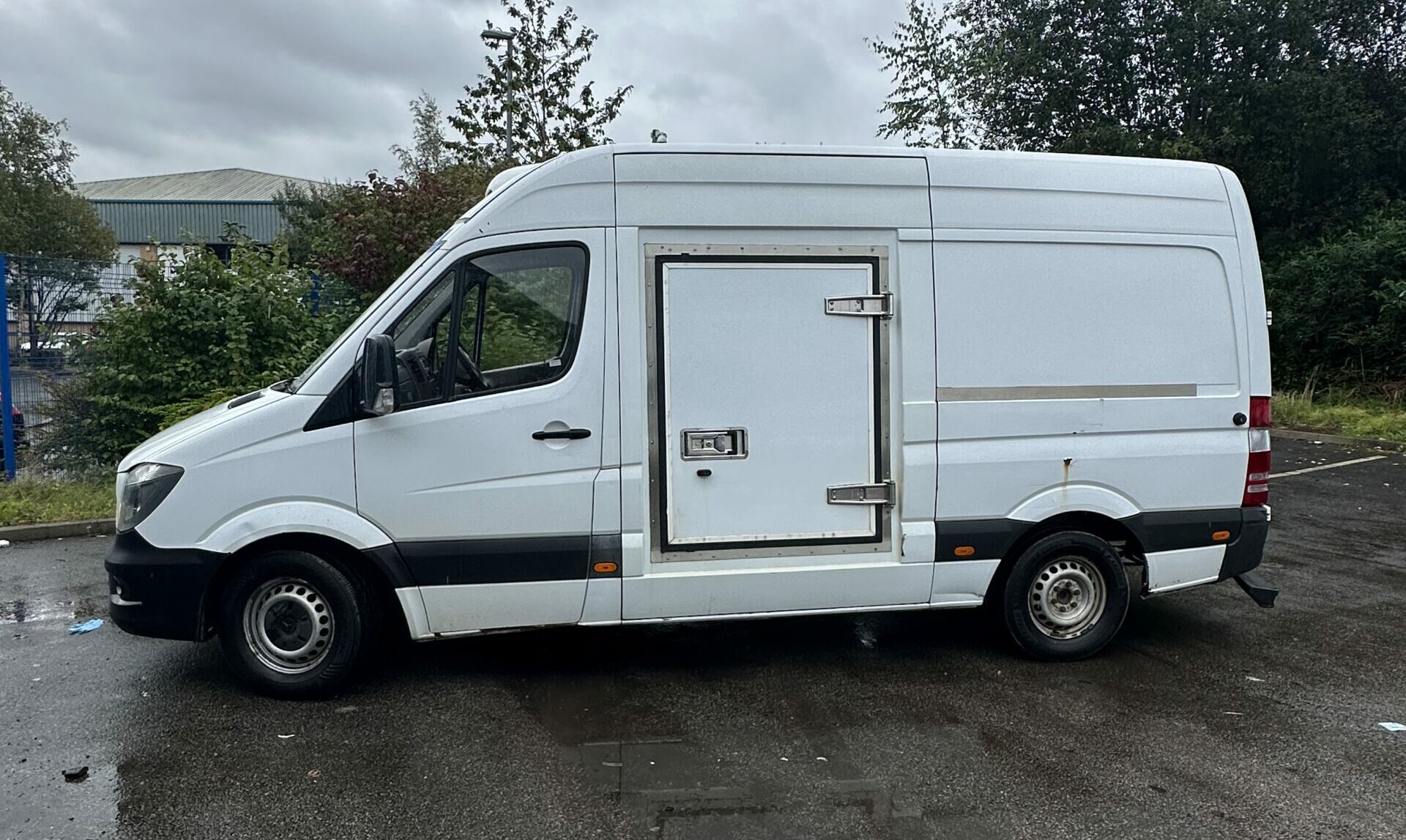Foodborne illnesses can be extremely dangerous, and in some cases, fatal. Since the onset of the COVID-19 pandemic, food businesses now, more than ever, need to take every measure to ensure no cross-contamination between their products. Causing consequences for both consumers and companies, refrigerated van owners must ensure the transportation of food and drink products is conducted following food hygiene regulations.
This blog will explore what cross-contamination is and how to prevent it, along with advice on best practices for food delivery services.

What is cross-contamination?
Cross-contamination refers to the transfer of harmful microorganisms, such as bacteria and viruses from one food product or surface to another. These pathogens can result in illness if the contaminated food is consumed, causing 2.4 million cases of disease every year in the UK, and costing society around £9.1 billion. Some of the most common foodborne pathogens include:
- Norovirus – virus
- Listeria – bacteria
- Salmonella – bacteria
- Campylobacter – bacteria
- E.coli – bacteria
The symptoms of some of these diseases can range from mild discomfort to serious, possibly even life-threatening illnesses. The most common symptoms involve vomiting, diarrhoea and stomach cramps, but in cases such as Campylobacter, the bacteria can spread into the bloodstream and cause a life-threatening infection. Read more about some of the most common foodborne illnesses.
As the public’s health is at risk, it is vitally important that every measure is taken to prevent cross-contamination. Here are some ways your business can stop foodborne pathogens from infecting your products.
How to prevent cross-contamination
The first step in preventing cross-contamination is to be aware of how it may occur at every step of the food transportation process. During the loading of goods into your refrigerated van, you must separate raw and cooked foods. This is done through proper storage techniques where products are organised, ensuring cooked, raw and dairy products are kept apart. Use separate storage containers for different food categories.
Proper packaging and use of containers can be a key difference in preventing cross-contamination. Using sealed containers means food products are protected by a barrier. Products such as raw meat that may leak and therefore cross-contaminate other products are prevented from doing so. Clearly labelling products can also help indicate what the contents of the containers are, its expiration date and any special handling requirements.
If possible, it can be a good idea to utilise shelving units or racks to keep products off the floor. This means your food goods are less likely to move around during transportation, reducing the risk of cross-contamination with dirt or moisture and other foods.
A helpful strategy to implement is the ‘First In, First Out’ approach, meaning that older products are used before the newer ones, minimising spoilage and bacterial growth, and helping prevent further cross-contamination.
Ensure you are using a system to monitor temperature. At Cool Running Rental, our vans come fitted with in-cab controls to allow for the easy monitoring and adjusting of temperature from the front seat. It is also important to regularly check your van’s temperature monitoring system to ensure it is functioning and maintaining the correct temperature for your cargo.

Finally, proper cleaning and sanitisation of your refrigerated van is essential in preventing cross-contamination. Regular cleaning to eliminate bacteria and viruses can be made easier with a cleaning schedule, using the appropriate cleaning products safe for food transportation, and prioritising ‘high-touch’ areas (door handles, shelving, containers).
One of the most important factors for refrigerated vans to consider is their ability to control the correct temperature for each product. Below are some tips for maintaining an optimal temperature for the safe transportation of food products.
The importance of temperature control
As we know, storing food incorrectly allows for foodborne bacteria and viruses to grow and cross-contaminate your products. If food is left stored outside of its optimal temperature for even 20 minutes, bacteria can double in quantity and spread uncontrollably. You must be aware of each food category’s optimal temperature for storage so that it can be maintained throughout the journey. Here are some food’s correct storage temperatures:
- Chilled Food (including meat, poultry, fish, dairy products and most fruit and vegetables) should legally be stored at 8°C, but best practice recommends below 5°C.
- Frozen Food should legally be stored at -12°C, but best practice recommends -18°C.
Not all foods must be stored at colder temperatures, however. Foods such as cans, pasta, rice and root vegetables (non-perishable foods) can be stored at room temperature. Other variables must be considered, such as light exposure and moisture as these can quickly accelerate spoilage. Read more about ‘Tips for transporting foods at safe temperatures’.
You are now aware of the implications of improper food storage and ways to prevent cross-contamination, however, if you are working in a wider team, your employees must be also trained correctly. Train any staff in proper food hygiene, including handwashing, glove-wearing and personal hygiene. All employees should be able to understand the different temperature requirements for the various food products they are handling. Cross-contamination can occur at any stage in the food transportation process, so having all workers knowledgeable in temperature control and food hygiene is a must.
Protecting your customer’s health and safety is paramount to your business’s reputation and survival. Through this blog, you should be able to reduce your risk of cross-contamination in your refrigerated van, ensuring the safe delivery of all food products to their destination.
Make sure to always use proper storage, temperature maintenance and sanitation for each journey and feel confident in delivering safe and healthy food.
If you are interested in our range of refrigerated vans, get in touch for a free quote on all our available vans.




